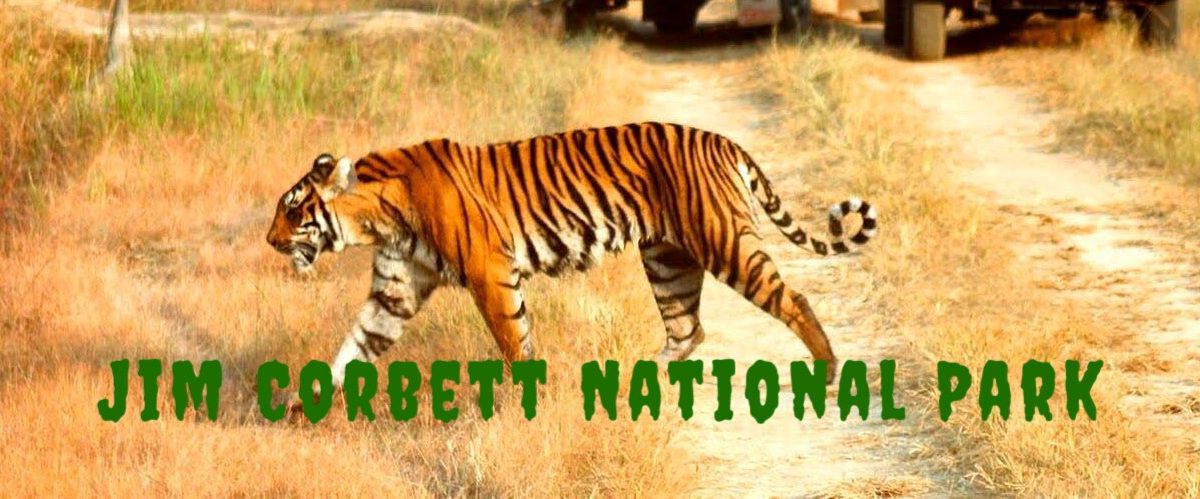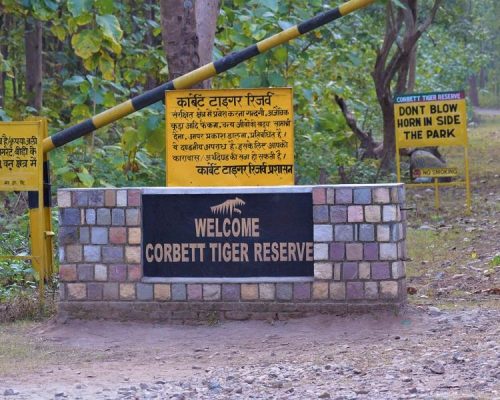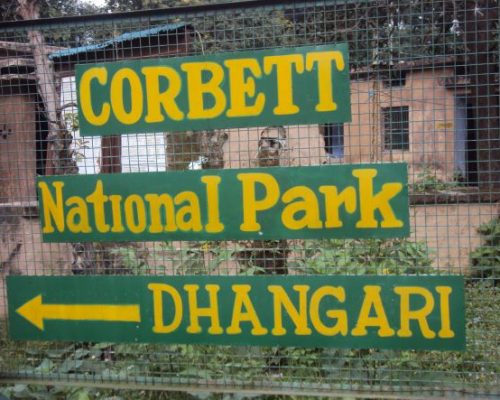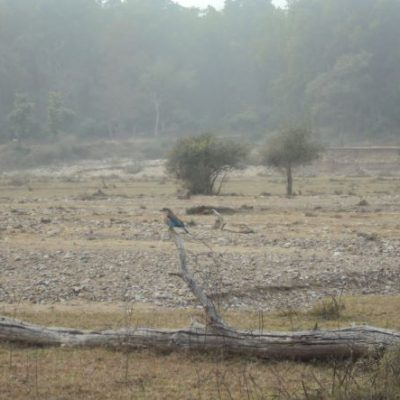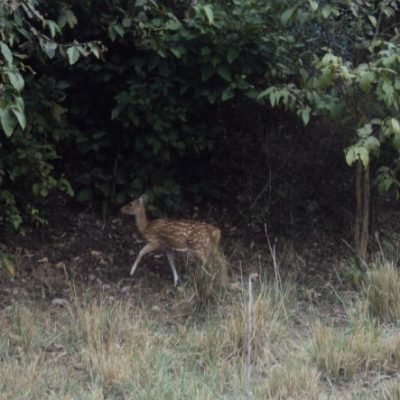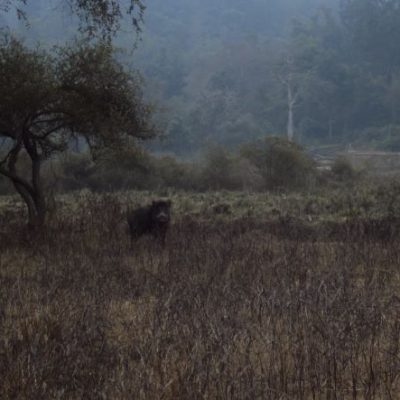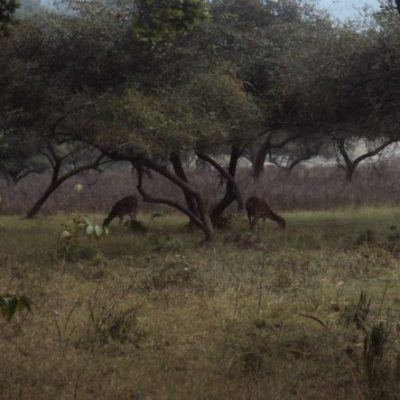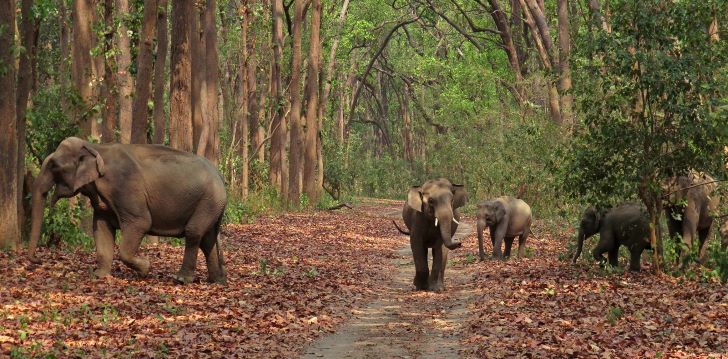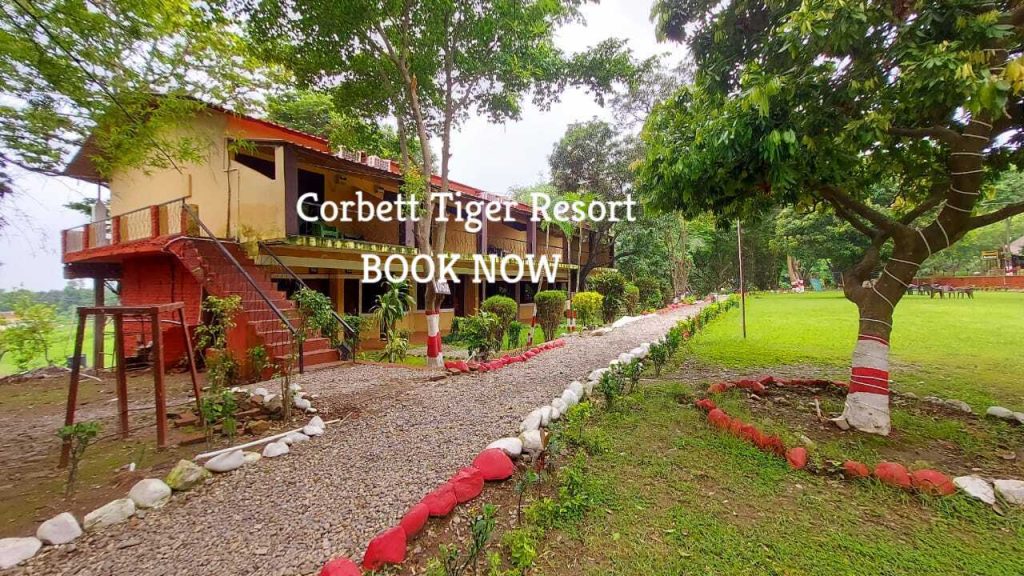Jim Corbett National Park
Jim Corbett National Park
Jim Corbett National Park,The largest Corbett Tiger Reserve, which includes the Jim Corbett National Park, is located in Uttarakhand’s Nainital area and is home to Project Tiger. The abundance of tigers in Corbett’s majestic scenery is well known. As India’s oldest and most prominent national park, Corbett was first established in 1936 as Hailey National Park. It is also honored for being the site of the 1973 launch of Project Tiger. The father of Project Tiger, an initiative in India to protect some of the world’s most endangered species and the National Wild Animal of India known as tigers, is this Special Tiger Territory.
Area:Spread over 1318.54 sq km, of which 520 sq km.
Jim Corbett National Park Tourism
A recent trend in wildlife tourism is influencing the Corbett National Park’s tiger and elephant migration routes. It is acknowledged that the fast expansion of tourism is unsustainable in terms of both visitor volume and infrastructure. The duties of forest officials extend beyond the maintenance of parks and conservation efforts to include wildlife tourism. For the tens of thousands of tourists that visit the park each year from all over the world and diverse parts of the country. Visitors get the incredible opportunity to see wild creatures in their native habitats and take in the unspoiled beauty of nature thanks to organized wildlife tourism in the Corbett Tiger Reserve. This is a fantastic plan to educate people from all walks of life about the need for animal protection.
Jim Corbett National Park Ecotourism
The majority of people believe that ecotourism is the same as natural-area tourism, but it is more than this. When visiting natural regions that are affected by environmental problems, visitors should exercise extreme caution. True ecotourism supports the local population’s way of life and sense of cultural identity. This activity is a crucial instrument for environmental preservation. This is true because ecotourism provides jobs for locals and produces income for the government agencies in charge of administering the protected area.The locals are proud of their tourist industry, which has inspired them to promote ecotourism in the region and appreciate their cultural and natural resources. By providing a chance for an improved, better, and more educational tourist experience, it also stimulates the visitors.
The Tourist and Safari Zones
The Corbett National Park has been separated into six main tourism zones in order to boost tourism in this area, the Corbett National Park has been divided into six main tourism zones. These are the park’s clearly defined core or buffer zones, where guests may participate in the wildlife safari and observe the animals’ alluring behavior up close.
Bijrani Safari Zone: Due to its abundant natural beauty and wide-open grasslands, Bijrani Zone is a highly popular tourist destination. Only 1 km separates the zone’s entry gate from Ramnagar city.
Jhirna Safari Zone: Jhirna is a year-round visitor destination and another significant tourism area inside Jim Corbett National Park. Ramnagar city is 16 kilometers away from Jhirna Gate.
The Dhikala Zone: In November 2014, the Corbett National Park’s newest ecotourism area, Dhela, was added to the tiger reserve zone. Only this portion of the reserve’s buffer zone is accessible to visitors in CTR. Due to its extensive biodiversity and year-round accessibility, the Zone is drawing in a lot of people. Additionally, it is around 13 kilometers from Ramnagar City.
Dhikala Zone: The Dhikala Zone, the biggest and most varied jungle safari area in Corbett, is well-known for its abundant natural beauty and for providing the greatest views of its unusual flora. Ramnagar city is located 18 kilometers from the entry gate. For die-hard wildlife aficionados, a night’s stay inside the Dhikala Tourism Zone is strongly advised.
Durga Devi Zone: For those who like bird watching, the Durga Devi Zone, which is located at the northeastern edge of Jim Corbett National Park, is heaven on earth. The entry gate is situated around 36 kilometers away from Ramnagar City.
Sitabani Buffer Zone: The Sitabani Buffer Zone is not a part of the Corbett Tiger Reserve. However, if you enjoy the calm atmosphere of beautiful nature, you must travel to the Sitabani region.
Zone Entry Gate
Bijrani Amdanda
Jhirna Dhela
Dhikala Dhangari
Durgadevi
Zone Entry Gate
Dhela Dhela
Garjiya Garjiya
Sonanadi Vatanvasa
Pakhro Pakhro
Timings
Evening 3:00 PM–6:00 PM | Morning 6:00 AM–9.30 AM (Safari Timing Changes with the Seasons)
Permission of CTR, Jeep, Driver, Permit, and All Entries & Taxes Included *Guide Fee should be paid in cash by the visitor on the spot Hotel pick-up and drop-off are not included.
Jeep Safari Cost and Safari Areas
Price (Indian) Rupees: 5000/- Jeep (A maximum of 6 people and 2 children between the ages of 5 and 12 are permitted in ONE Jeep)
Price (for a foreigner) INR 12000 per Jeep (a maximum of 6 people and 2 children (aged between 5 and 12) are permitted in ONE Jeep)
Safari Canter Price & Zone
Price in Indian Rupees: 1600 per person (16 Seats in ONE)
The cost per foreigner is INR 3500. ( ONE Canter has 16 Seats )
Zones of tranquilly Dhikala
Timings: Morning 6 a.m. to 11:50 a.m.; evening 12 p.m. to 6 p.m.
Advance Booking Procedure: When making a booking request, please include the information below.
Official website – Corbett National Park Uttarakhand government you find more details for a safari like Fees, Time, Terms, and Payment details. *Don’t miss the guide duplicate website same type name Uttarakhand government official site always last part is – uk.gov.in
( उत्तराखंड सरकार की आधिकारिक वेबसाइट -https://www.corbettonline.uk.gov.in/ है कॉर्बेट नेशनल पार्क उत्तराखंड सरकार आपको सफारी के लिए शुल्क, समय, शर्तें और भुगतान विवरण जैसे अधिक विवरण मिलते हैं। * डुप्लिकेट वेबसाइट के नाम मिलते जुलते होते है उत्तराखंड सरकार की आधिकारिक साइट /Website Link: https://www.corbettonline.uk.gov.in/
Help Desk URL – https://www.corbettonline.uk.gov.in/crbt_Helpdesk.aspx
Help Desk Number – Any Query/Help Kindly Contact: +919759363344 (Ramnagar Office), +911382229426 For Sonanadi Zone (Kotdwar Office)
(Available from 10 AM to 5 PM)
Rivers Around Corbett National Park
The stunning avifaunal diversity found in the Corbett National Park depends on water to survive. The park’s impressive variety of plant and animal species can be observed only because of the powerful rivers that run through it, which are essential in determining the biodiversity. The main hydrological source for the Corbett is the Ramganga river (west), together with its key tributaries, the Sonanadi, Palain, and Mandal. The river Kosi also passes past the national park and provides a large amount of water to the neighborhood. On the banks of the Kosi River is where the majority of the Corbett Wilderness is located.
The region’s diverse aquatic life is shaped by these bodies of water. Rivers supply drinking water for the Corbett’s priceless wildlife, which makes them essential during the dry season. These are the rivers that flow through and surround Jim Corbett National Park. Corbett Rivers
Ramganga River: The Ramganga River serves as Corbett National Park’s lifeblood. Corbett would not be what it is now without Ramganga. It is the largest of the park’s priceless water bodies. The fact that this river was briefly known as Ramganga National Park between 1954 and 1957 before being renamed Corbett National Park gives us an idea of the significance of this river. The river originates in the Gairsain area of the Lesser Himalayas and is nourished by rain. Before you enter the park at Marchula, the river travels for a distance of about 100 kilometers. Until Kalagarh, where it enters the plains, it runs around 40 km east-west inside the park. During this passage through the park, it draws water from the Palain, Mandal, and Sonanadi rivers before ultimately emptying into the Ganga River close to Farrukhabad in Uttar Pradesh.
Kosi River: A significant percentage of the Corbett’s wild relies on the Kosi river to satisfy their thirst. The Kosi is a perennial river. The Kosi river, which travels via Dhikuli from Mohan to Ramnagar, feeds the park’s eastern edge. The Kosi does not, however, cross the park’s perimeter.
Sonanadi River: A prominent tributary of the Ramganga River is the Sonanadi River. The Sonanadi Wildlife Sanctuary, which borders Corbett National Park and is considered an essential component of Corbett Tiger Reserve, inspired the river’s name. It approaches Corbett from the northwest and, near the reservoir, joins the Ramganga River.
Bird watching in jim corbett national park
Up to 1200 bird species, or around 14% of all known species, may be found in India, 141 of which are indigenous to this area. Even more astounding is the fact that India has 20 Orders and 77 families out of the 155 Families and 27 Orders that have been used to categorise avian life. The climate, the variety of vegetation, and its broad altitudinal range, which stretches from sea level to the Himalayas, are the causes of this species richness. Because of their sweetness and shrillness, chirping noises are among our favourite sounds to hear. They make our hearts sing with joy. As fascinating as seeing an animal in the wild is studying birds closely and learning about their habitats Some people get disappointed when they don’t see a bird for a while. However, this game has rules just as every other game does. Here are a few examples.
Because certain species of birds may only be identified in the fields by their cries, songs and bird calls are often the best identification tools available. The two unique environments that may be combined into one amazing bird viewing excursion make Uttarakhand the greatest place to go birding. In addition to the sub-Himalayan birding in Corbett National Park, there is a good chance of seeing a tiger or an elephant. The majority of the birds in the Nainital area’s surroundings are mainly Himalayan species that are found at these higher altitudes.
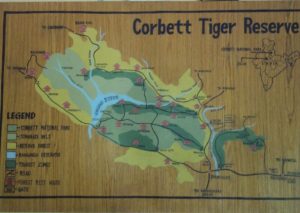
Closing Time: The Corbett Tiger Reserve is always closed when it rains. From 15 June to 14 November, all ecotourism areas of the Corbett Tiger Reserve are off limits to guests for overnight stays. From 30 June to 14 October, day visits are not permitted in the Bijrani Zone. From 16 June to 14 November, the Dhikala, Lohachaur, and Sonanadi Tourism Zones are also off limits to day visitors. These ecotourism zones remain in standby mode from June 1 through June 15, and no reservations are made in advance during this period since the director of the Corbett Tiger Reserve may abruptly close these zones owing to poor weather conditions in the interest of visitor safety.
Perfect Time To Visit – Right Season To Plan Your Visit To Jim Corbett National Park
India’s Jim Corbett National Park is a beautiful tourist destination where visitors from all over the world flock in big numbers to see the undiscovered beauty of nature. This is a fantastic location where you may see threatened species, lovely wildlife and flora, nice weather, amazing peace, and much more. However, in order to get the most of your beautiful trip to this unique location, you need learn about a few essential elements before deciding to dive into the enjoyment of experiencing Jim Corbett National Park’s magnificence.
Season of Winter: Winter season runs from October until February. During the winter, which runs from October to February, this park is a magnificent home for beautiful and elusive birds. Therefore, this is the most interesting time of year to go birding since you will encounter a wide diversity of birds then. In addition to birds, you may see regal Bengal tigers prowling the area throughout the winter. Therefore, there are excellent possibilities of seeing an endangered tiger in its native habitat. The temperature in this park frequently drops below five degrees Celsius at night. The afternoon, on the other hand, is exceedingly warm and pleasant. Animals come out throughout the day to sunbathe, so you can readily detect them.
Monsoon Season: July through September
If you despise crowded areas, we nevertheless urge you to visit Jim Corbett National Park during the monsoon season even if it is not the most lovely time of year for travellers to do so. During this time of year, fewer people attend. Thus, it follows that right now is the ideal season to go hiking. The atmosphere is comfortable because the temperature has dropped at that time. According to legend, animals prefer the rainy season for mating. Tourists can thus take pleasure in this time. However, it is crucial to remember that travelling at this season of year carries a considerable danger of landslide and soil erosion.
Summer Season: From March to June:
The summer season in India runs from mid-March to mid-June. The summertime temperature is consistently extremely high. The temperature throughout the daytime rises to as high as 40 degrees Celsius. Therefore, at this time, the park’s animals and other residents suffer from the intense heat of the sun. The greatest time to come is during this season since it gives visitors the most opportunity to see the park’s resident animals. Come during this time of year to experience river rafting and a close encounter with endangered wildlife and bird species.
Distance to Jim Corbett National Park in Nainital, Uttarakhand, India from various tourist and travel places. Distance from Delhi NCR Corbett National Park to Corbett National Park in Uttarakhand, according to a map that includes Nainital, Corbett, Kathgodam, Haldwani, Almor, Ranikhet, Bhimtal, Dehradun, Haridwar, and Mussoorie.
Delhi – 256kms
Meerut – 215kms
Haridwar – 157kms
Dehradun – 252 kms
Almora – 135kms
Bhim Tal – 85kms
Haldwani – 38kms
Naukuchia Tal – 28kms
Bageshwar – 197kms
Nainital – 65kms
Ranikhet – 93kms
Lucknow – 451kms
Lansdowne – 120kms
Udham Singh Nagar – 32kms
Kaladhungi – 60Kms
Kashipur – 95Kms
Ramnagar – 16kms
How To Reach Corbett National Park
You should visit Corbett National Park between the months of November and June if you’re planning a trip there. Reaching Corbett is never going to be an issue because it is one of the most well-liked tourist spots both inside and outside the state of Uttarakhand. Depending on your interests and travel habits, there are several kinds of transportation available. The relevant details on how to get to Corbett are included here. You are always welcome to contact our travel specialists at any moment if you need additional information.
Reach Corbett By Air
The closest domestic airport is Phoolbagh (Pantnagar), making it ideal for air travellers. The airport has good connections to Delhi, the nation’s capital, and the IGI airport. Corbett is 300 kilometres from Delhi.
Reach Corbett By Rail (By Train)
The closest railroad station, Ramnagar, is located around 60 kilometres away. So, you may start by getting to this train station. Regular trains run from several important cities around the nation to this railway stop. You can rent cabs after arriving at the railway station. The cab fare is around Rs 1,000. Given that Ramnagar station is just 60 km distant, there should be no problems. Another nearby train station is Moradabad, which is located 104 kilometres away.
Reach Corbett By Road (By Bus)
All the major tourist destinations in the state and outside the country are quite well connected to Ramnagar, from which Dhikala is only 50 km away. The Hapur-Moradabad-Ramnagar route will take you to the Corbett National Park if you begin your journey in Delhi, the capital of India. Ramnagar is also accessible from Lucknow.

